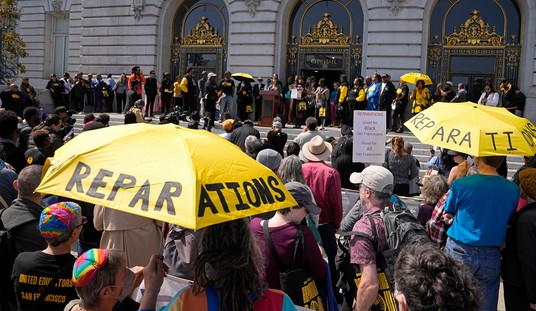If you’re concerned about the implications for the geopolitical scene, as well as for the Church, of the conversion of Hagia Sophia to a mosque, relax: in a piece by the prominent Turkish moderate Muslim Mustafa Akyol, the New York Times is here to tell you that what’s happening is un-Islamic. And while it is good that Akyol is advocating for tolerance and pluralism in Islam, as is so often the case with expositions of how – properly understood! – Islam is really peaceful, tolerant, and cuddly, Akyol’s premises are false, and thus unlikely to convince any Muslims who think that the conversion of Hagia Sophia to a mosque is a good thing that it ought to be kept as a museum, or even turned back into a cathedral.
For example, Akyol claims that “The Prophet Muhammad and his small group of believers saw the earlier monotheists — Jews and Christians — as allies.”
Is that so? As with many other points he makes, Akyol is relying here on his readers’ ignorance of the Islamic source material. Akyol is almost certainly aware of the hadith containing these notorious orders from Muhammad: “I will expel the Jews and Christians from the Arabian Peninsula and will not leave any but Muslim” (Sahih Muslim 19.4366). But Akyol also almost certainly knows that virtually every single person who reads his New York Times article will not be aware that Islamic tradition ascribes this decidedly intolerant statement to Muhammad.
Akyol also praises Muhammad’s tolerant stance toward the Christians of Najran in southern Arabia, noting that Muhammad “signed a treaty with them, which read: ‘There shall be no interference with the practice of their faith. … No bishop will be removed from his bishopric, no monk from his monastery, no priest from his parish.’”
Well, that’s just wonderful. But it leads to the inevitable question: where is that community now? Why didn’t the local Muslims follow Muhammad’s famously magnanimous example, honor the treaty he signed, and allow the Christians to continue to live there? Why did they instead expel them, such that there is now no trace of the fact that there was ever a Christian community there at all? According to historian Philip K. Hitti, author of the seminal History of the Arabs, the caliph Umar expelled the Christians from Najran in the mid-seventh century so as to fulfill Muhammad’s expulsion order. Akyol doesn’t mention the expulsion order at all, so he is freed from the obligation of explaining why Umar and his men thought it their duty to follow that, and not to honor Muhammad’s treaty. Relying on readers’ ignorance certainly makes a writer’s job easier.
Akyol adds: “The Christian historian Eutychius even tells us that when Caliph Umar entered the city, the patriarch of Jerusalem, Sophronius, invited him to pray at the holiest of all Christian shrines: the Church of the Holy Sepulcher. Umar politely declined, saying that Muslims might later take this as a reason to convert the church into a mosque. He instead prayed at an empty area that Christians ignored but Jews honored, then as now, as their holiest site, the Temple Mount, where today the Western Wall, the last remnant of that ancient Jewish temple, rises to the top of the Mount, on which the Mosque of Umar and the Dome of the Rock were built.”
This is what Akyol doesn’t tell you: Eutychius wrote in the tenth century, three hundred years after the events he was recounting. But at the actual time of the Muslim conquest, Sophronius lamented the advent of “the Saracens who, on account of our sins, have now risen up against us unexpectedly and ravage all with cruel and feral design, with impious and godless audacity.”
In a sermon in December 636 or 637, Sophronius deplored “so much destruction and plunder” and the “incessant outpourings of human blood.” He said that churches had been “pulled down” and “the cross mocked,” and that the “vengeful and God-hating Saracens…plunder cities, devastate fields, burn down villages, set on fire the holy churches, overturn the sacred monasteries, oppose the Byzantine armies arrayed against them, and in fighting raise up the trophies [of war] and add victory to victory.”
His examples about churches and synagogues left standing, moreover, ignores the fact that the Christians and Jews who used them were reduced to dhimmi status, paying money into the Islamic treasury. If those communities had been completely destroyed, no money would be flowing in.
The inaccuracies and false claims of Mustafa Akyol’s article will not, of course, matter to the New York Times, because Akyol is telling Times readers what they want to hear. Would the New York Times ever publish an honest examination of why some Muslims think the conversion of Hagia Sophia was justified both in 1453 and today? Not on your life.
Robert Spencer is the director of Jihad Watch and a Shillman Fellow at the David Horowitz Freedom Center. He is author of 21 books, including the New York Times bestsellers The Politically Incorrect Guide to Islam (and the Crusades) and The Truth About Muhammad. His latest book is Rating America’s Presidents: An America-First Look at Who Is Best, Who Is Overrated, and Who Was An Absolute Disaster. Follow him on Twitter here. Like him on Facebook here.










Join the conversation as a VIP Member